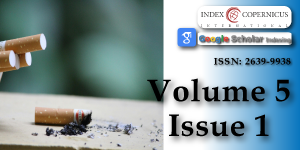Drug treatment and rehabilitation in China: Theoretical rationales and current situations
Main Article Content
Article Details
Copyright (c) 2021 Gu GY, et al.

This work is licensed under a Creative Commons Attribution 4.0 International License.
United Nations Office on Drugs and Crime. World drug report 2020. https://wdr.unodc.org/wdr2020/field/WDR20_BOOKLET_1.pdf
GBoDC N. Global burden of disease study 2017 (GBD 2017) socio-demographic index (SDI) 1950–2017. Seattle, United States Inst Heal Metrics Eval. 2018.
Simpson DD, Sells SB. Effectiveness of treatment for drug abuse: An overview of the DARP research program. Adv Alcohol Subst Abuse. 1982; 2: 7–29.
Sutherland E, Cressey D. Criminology, eight edition. Philadelphia/New York/Toronto: JB Lippincott Company; 1970.
Goff C, Gilbert G. Edwin H. Sutherland: The Development of Differential Association Theory. In: The Origins of American Criminology. 2018.
Akers RL. Criminological theories: Introduction and evaluation. Routledge; 2013.
Karakos HL. Positive peer support or negative peer influence? The role of peers among adolescents in recovery high schools. Peabody J Educ. 2014; 89: 214–228. PubMed: https://pubmed.ncbi.nlm.nih.gov/24839335/
McKay JR, Van Horn D, Rennert L, Drapkin M, Ivey M, et al. Factors in sustained recovery from cocaine dependence. J Subst Abuse Treat. 2013; 45: 163–172. PubMed: https://www.ncbi.nlm.nih.gov/pmc/articles/PMC3696509/
Weiss RD, Griffin ML, Gallop RJ, Najavits LM, Frank A, et al. The effect of 12-step self-help group attendance and participation on drug use outcomes among cocaine-dependent patients. Drug Alcohol Depend. 2005; 77: 177–184. PubMed: https://pubmed.ncbi.nlm.nih.gov/15664719/
Liu L, Huijuan D. Research on the maintenance of drug use behavior by Chinese female drug users. Population and Development 2015; 4-81.
Xuelian Z. Anomie and Regression: A Sociological Analysis of Criminal Sociology of Young Women’s Drug Abuse Career Exit. Chinese Youth Studies. 2020; 73-79.
Hirschi T. A control theory of delinquency. Criminol theory Sel Class Readings. 1969; 1969: 289–305.
Cassino P, Rogers W. Hirschi’s Social Bonding Theory Nearly 45 Years Later: A comparison of a traditional, contemporary and hybrid model. Theory in Action. 2016.
Chapple CL, Hope TL, Whiteford SW. The direct and indirect effects of parental bonds, parental drug use, and self-control on adolescent substance use. J Child Adolesc Subst Abuse. 2005; 14: 17–38.
Zavala E, Spohn RE, Alarid LF. Gender and serious youth victimization: assessing the generality of self-control, differential association, and social bonding theories. Sociol Spectr. 2019; 39: 53–69.
Knight DK, Simpson DD. Influences of family and friends on client progress during drug abuse treatment. J Subst Abuse. 1996; 8: 417–429. PubMed: https://pubmed.ncbi.nlm.nih.gov/9058354/
Liu L, Wang H, Chui WH, Cao L. Chinese drug users’ abstinence intentions: The role of perceived social support. J Drug Issues. 2018; 48: 519–535.
Xiong H, Jia J. Situational Social Support and Relapse: An Exploration of Compulsory Drug Abuse Treatment Effect in China. Int J Offender Ther Comp Criminol. 2019; 63: 1202–1219. PubMed: https://pubmed.ncbi.nlm.nih.gov/30501427/
Becker HS. Outsiders: studies in the sociology of deviance. Vol. 29, New York: Free Press. 1963.
Bernburg, JG. Labeling theory. In Handbook on crime and deviance. Springer. Cham. 2019; 179-196.
Anderson TL. Types of identity transformation in drug-using and recovery careers. Sociol Focus. 1993; 26: 133–145.
Biernacki P. Pathways from heroin addiction: Recovery without treatment. Temple University Press; 1986.
Luoma JB, Twohig MP, Waltz T, Hayes SC, Roget N, et al. An investigation of stigma in individuals receiving treatment for substance abuse. Addict Behav. 2007; 32: 1331–1346. PubMed: https://pubmed.ncbi.nlm.nih.gov/17092656/
Myers B, Fakier N, Louw J. Stigma, treatment beliefs, and substance abuse treatment use in historically disadvantaged communities. Afr J Psychiatry. 2009; 12: 218-222. PubMed: https://pubmed.ncbi.nlm.nih.gov/19750251/
Deng R, Li J, Sringernyuang L, Zhang K. Drug abuse, HIV/AIDS and stigmatisation in a Dai community in Yunnan, China. Soc Sci Med. 2007; 64: 1560–1571. PubMed: https://pubmed.ncbi.nlm.nih.gov/17257727/
Yang M, Mamy J, Gao P, Xiao S. From abstinence to relapse: a preliminary qualitative study of drug users in a compulsory drug rehabilitation center in Changsha, China. PLoS One. 2015; 10: e0130711. PubMed: https://pubmed.ncbi.nlm.nih.gov/26107639/
Meng J, Burris S. The role of the Chinese police in methadone maintenance therapy: A literature review. Int J Drug Policy. 2013; 24: e25–34. PubMed: https://pubmed.ncbi.nlm.nih.gov/23623719/
Commission NNC. Annual report on drug-using situation in China. Natl Narcotics Control Comm. 2019.
Liu L, Hsiao SC. Chinese Female Drug Users’ Experiences and Attitudes With Institutional Drug Treatment. Int J Offender Ther Comp Criminol. 2018; 62: 4221–4235. PubMed: https://www.ncbi.nlm.nih.gov/pubmed/29478389
Liu L, Chui WH, Chen Y. Violent and non-violent criminal behavior among young chinese drug users: A mixed methods study. Int J Environ Res Public Health. 2018; 15: 432. PubMed: https://pubmed.ncbi.nlm.nih.gov/29498649/
Bull M, Denham G, Trevaskes S, Coomber R. From punishment to pragmatism: Sharing the burden of reducing drug-related harm. Chinese J Comp Law. 2016; 4: 300–316.
Liu L, Chui WH. Rehabilitation policy for drug addicted offenders in China: current trends, patterns, and practice implications. Asia Pacific J Soc Work Dev [Internet]. 2018; 28: 192–204.
Zhang SX, Chin KL. A People’s War: China’s struggle to contain its illicit drug problem. Improv Glob Drug Policy Comp Perspect UNGASS 2016; 2015; 1–15. http://www.brookings.edu/~/media/Research/Files/Papers/2015/04/global-drug-policy/A-Peoples-War-final.pdf?la=en

